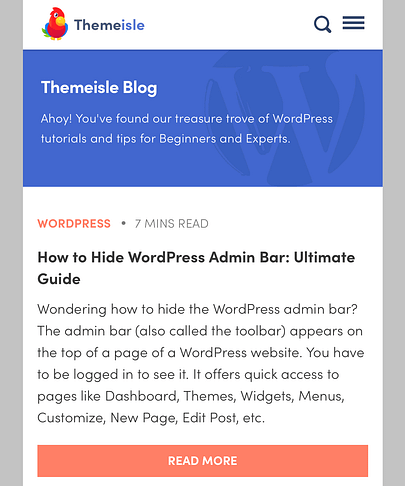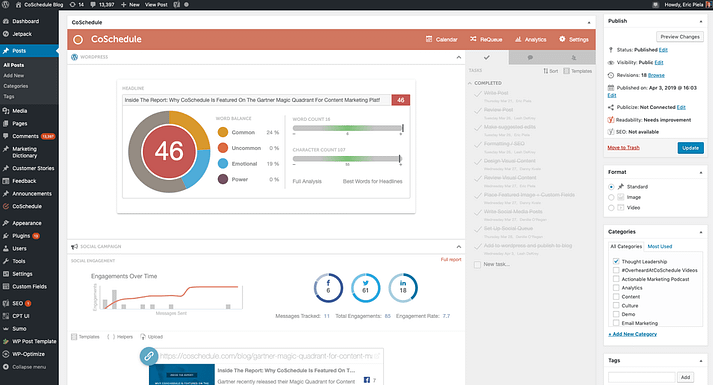Offer concrete value
his is a simple yet crucial concept: most blogs need to offer their visitors a tangible benefit. This can be anything from answering relevant questions to providing recommendations.
How you approach offering value will depend on what kind of blog you run. However, one tip can apply to most niches: try to answer the question “Why should my readers care?” as early in each post as possible. That way, new readers will be more likely to invest in the answer.
1 Prioritize responsive features
You probably don’t need us to tell you that mobile users are a huge part of your audience. That applies to both current and potential readers. That means making your content accessible to those readers is essential.
To do that, your blog should follow the key principles of responsive design.
The goal is for your posts to look just as good (and be just as usable) on mobile devices as on desktops.
Including mobile-friendly features also enables users to have a seamless experience across every version of your website.

On WordPress, virtually all themes are responsive nowadays. However, it’s still worth checking to make sure you like how your site looks to mobile visitors.
2 Submit a sitemap
A sitemap is a file filled with information about your site. Google uses this data to explore and understand your blog. As such, it can play a role in your search engine rankings.
WordPress creates a sitemap for you automatically. However, if you want to make 3 A/B test your landing pages
A/B testing compares one version of a page against another. It studies traffic and conversion data to determine which version performs the best. By conducting this type of research, you can boost your odds of more visitors and conversions.
Plus, you don’t have to stop at landing pages. You can A/B test everything from blog layouts to your home page. If you’re not getting as much traffic as you’d like, consider using this strategy to find ways to improve.
4. Keep a content calendar
Consistency is a vital part of any successful blog – after all, most people are unlikely to become active readers if it looks like the blog isn’t updating anymore. That’s why keeping a content calendar for yourself (or your team) can be crucial.
There are plenty of tools that can help you do this, such as CoSchedule:

You may also want to include user-generated content in your schedule. This can take some pressure off your own workload while involving your current audience more.
Comments
Post a Comment